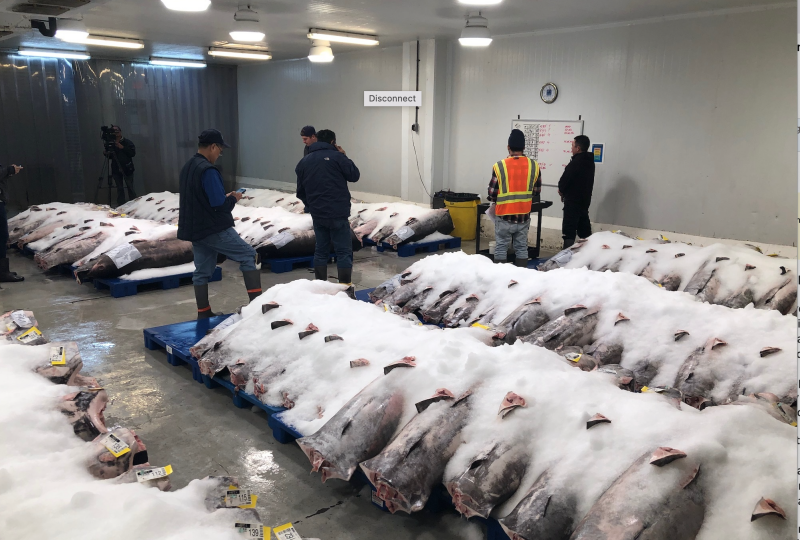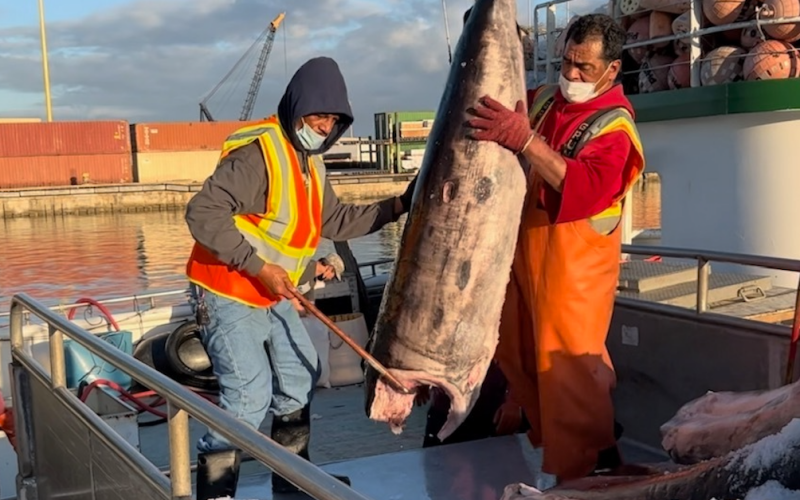Hawaii’s longline fleet has been in full swing since January, in the first season since the fishery was certified sustainable by the globally recognized Marine Stewardship Council, according to the Hawaii Longline Association.
“Hawaii-landed swordfish has always been a high-quality option for seafood lovers,” said Mike Goto, auction manager of United Fishing Agency Ltd., according to a statement from association this week. “The landed quality and size of fish, as well as the diverse culinary preparations for swordfish, really make it a premium seafood product.”
“The fishery is among the most highly monitored and strictly regulated fisheries on Earth,” said Eric Kingma, executive director of the Hawaii Longline Association. “We have 100 percent federal observer coverage, satellite-based vessel monitoring, daily at-sea electronic reporting, and other requirements including protected species mitigation measures. With our recent MSC certification, consumers can be more confident than ever that the Hawaii swordfish they enjoy is harvested in a responsible and sustainable manner.”
The longline fleet was the first Hawaii fishery to enter the MSC program for assessing “if a fishery is well-managed, and reflects the most up-to-date understanding of internationally accepted fisheries science and management,” the MSC said in announcing the certification in September 2022.
The fishery was examined in a 16-month review carried out by a third-party assessment body, the Control Union UK Limited. Under the MSC Fisheries Standard, any fishery must meet three core principles: Sustainable fish stocks, minimized environmental impact, and effective fisheries management. The MSC certification process ensures that seafood products can be traced to a MSC certified fishery through required recordkeeping.
The assessment covered two separate components of the HLA longline fishery: the shallow-set swordfish longline fishery, and the deep-set tuna longline fishery.
The Hawaii longline fleet is comprised of 150 vessels, with most targeting bigeye and yellowfin tuna year-round. Around 20 vessels out of the fleet seasonally fish for swordfish in waters approximately 1000 nautical miles north of Honolulu.
The annual weight of swordfish landings is around 1.5 million pounds, making the Hawaii fishery the largest producer of swordfish to the U.S. domestic seafood market most of it on the East Coast. Roughly half of all the swordfish landed by weight in the country is from the Hawaii fleet during its longline shallow-set swordfish season running from January until June, according to the association.








